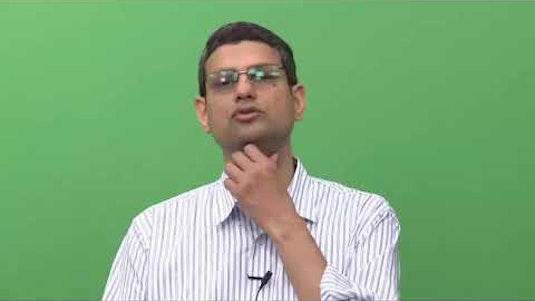
Description
Operations Research is a systematic approach of solving problems involving operations of a system by using scientific tools and techniques. It is a well-developed field with a sophisticated array of techniques that are routinely used to solve various real world problems. OR helps to make decisions better. It is regularly used in several areas such as inventory and supply chain management, marketing management, healthcare, telecommunication, finance, transportation, energy and so on. Active areas may also be at the intersection of these and many other disciplines. There are many advantages of studying O.R., such as improving decision making, better control, higher productivity, better coordination, etc. In business, very few things are certain, and managers must often make decision based on their instincts instead of being able to use reliable data. O.R. techniques fill this void with methods that quantify issues and give business managers a better basis for making decisions.
Tags
Syllabus
Week 1:Chapter 1 – LinearProgrammingProblem
Module-1:Mathematical Formulation of LPP and Graphical Method for Solving LPP
Module-2:Simplex Method for Solving LPP and Big-M Method
Week 2:Chapter 1 – Linear Programming Problem
Module-3:Some Special Cases in LPP
Module-4:Duality, and Solving LPP using Duality in Simplex Method
Module-5:Dual Simplex Method and Revised Simplex Method
Week 3:Chapter 2 – Transportation and Assignment Problems
Module-1:Mathematical Formulation and Initial BFS of Transportation Problem
Module-2:Optimality Test by Stepping Stone Method and MODI Method, and Some Special Cases of Transportation Problem
Module-3:Assignment Problem and Its Solution by Hungarian Method, and Travelling Salesman Problem
Week 4:Chapter 3 – Game Theory
Module-1:Basic Concept and Terminologies, Two-person Zero-sum Game, and Game with Pure and Mixed Strategies
Module-2:Dominance Principle, Arithmetic Method, and Graphical Method for Solving (2× n) Game
Module-3:Graphical Method for Solving (m×2) Game and Solution of Game by Simplex Method
Week 5:Chapter 4 – Job Sequencing and Replacement Theory
Module-1: Basic Terminologies and Assumptions of Job Sequencing, and Processing ofnJobs through 2 and 3 Machines
Module-2: ProcessingnJobs throughmMachines, and Processing 2 Jobs throughmMachines - Graphical Method
Module-3: Introduction to Replacement Theory and Determination of Optimal Replacement Time
Module-4: Selection of the Best Machine, and Individual and Group Replacement Policies
Week 6:Chapter 5 – Inventory Theory
Module-1:Economic Order Quantity and EOQ Models without Shortage
Module-2:EOQ models with Shortage and EPQ Models with/without Shortages
Week 7:Chapter 5 – Inventory Theory
Module-3:Multi-item Inventory Models, Purchase Inventory Model, and Inventory Models with Price Breaks
Module-4:Newsboy Problem and Probabilistic Inventory Model with Instantaneous Demand and No Set up Cost
Module-5:Probabilistic Inventory Model with Uniform Demand and No Set up Cost, and Buffer Stock in Probabilistic Inventory Model
Week 8:Revision, Assignment and Evaluation
Week 9:Chapter 6 – Queuing Theory
Module-1: Basic Characteristics of Queuing System and Probability Distribution of Arrivals
Module-2: Probability Distribution of Departures and Model I (M|M|1):(∞|FCFS)
Module-3: Model I. (General): (M|M|1): (∞|FCFS), and Model II. (M|M|1): (N|FCFS)
Module-4: Model III - (M|M|s): (∞|FCFS), and Model IV - (M|Ek|1): ( ∞|FCFS)
Week 10:Chapter 7 – Network Analysis
Module-1:Basic Components of Network and Critical Path Method (CPM)
Module-2:Total Float and Free Float of Activity, and CPM Model: Time-cost Optimization
Week 11:Chapter 7 – Network Analysis
Module-3:Program Evaluation and Review Technique (PERT)
Module-4:LP and Dual LP Solutions to Network Problem
Week 12:Chapter 8 – Dynamic Programming
Module-1:Basic Concept and Terminology, and Dynamic Programming Models I and II
Module-2:DP Model III, Solution of Discrete DP Problem and Solution of LPP by DP
Week 13:Chapter 9 – Integer Programming
Module-1:Introduction to Integer Programming, and Gomory's Cutting Plane Method for All IPP
Module-2:Gomory's Cutting Plane Method for Mixed IPP, and Branch and Bound Method
Week 14:Chapter 10 – Nonlinear Programming
Module-1:NLPP with Equality Constraints: Lagrange Multiplier Method
Module-2:NLPP with Inequality Constraints: Kuhn-Tucker (KT) Conditions, and Quadratic Programming
Module-3:Wolfe's Modified Simplex Method and Beale's Method
Week 15:Revision, Assignment and Evaluation

Operations Research
-
TypeOnline Courses
-
ProviderSwayam
Week 1:Chapter 1 – LinearProgrammingProblem
Module-1:Mathematical Formulation of LPP and Graphical Method for Solving LPP
Module-2:Simplex Method for Solving LPP and Big-M Method
Week 2:Chapter 1 – Linear Programming Problem
Module-3:Some Special Cases in LPP
Module-4:Duality, and Solving LPP using Duality in Simplex Method
Module-5:Dual Simplex Method and Revised Simplex Method
Week 3:Chapter 2 – Transportation and Assignment Problems
Module-1:Mathematical Formulation and Initial BFS of Transportation Problem
Module-2:Optimality Test by Stepping Stone Method and MODI Method, and Some Special Cases of Transportation Problem
Module-3:Assignment Problem and Its Solution by Hungarian Method, and Travelling Salesman Problem
Week 4:Chapter 3 – Game Theory
Module-1:Basic Concept and Terminologies, Two-person Zero-sum Game, and Game with Pure and Mixed Strategies
Module-2:Dominance Principle, Arithmetic Method, and Graphical Method for Solving (2× n) Game
Module-3:Graphical Method for Solving (m×2) Game and Solution of Game by Simplex Method
Week 5:Chapter 4 – Job Sequencing and Replacement Theory
Module-1: Basic Terminologies and Assumptions of Job Sequencing, and Processing ofnJobs through 2 and 3 Machines
Module-2: ProcessingnJobs throughmMachines, and Processing 2 Jobs throughmMachines - Graphical Method
Module-3: Introduction to Replacement Theory and Determination of Optimal Replacement Time
Module-4: Selection of the Best Machine, and Individual and Group Replacement Policies
Week 6:Chapter 5 – Inventory Theory
Module-1:Economic Order Quantity and EOQ Models without Shortage
Module-2:EOQ models with Shortage and EPQ Models with/without Shortages
Week 7:Chapter 5 – Inventory Theory
Module-3:Multi-item Inventory Models, Purchase Inventory Model, and Inventory Models with Price Breaks
Module-4:Newsboy Problem and Probabilistic Inventory Model with Instantaneous Demand and No Set up Cost
Module-5:Probabilistic Inventory Model with Uniform Demand and No Set up Cost, and Buffer Stock in Probabilistic Inventory Model
Week 8:Revision, Assignment and Evaluation
Week 9:Chapter 6 – Queuing Theory
Module-1: Basic Characteristics of Queuing System and Probability Distribution of Arrivals
Module-2: Probability Distribution of Departures and Model I (M|M|1):(∞|FCFS)
Module-3: Model I. (General): (M|M|1): (∞|FCFS), and Model II. (M|M|1): (N|FCFS)
Module-4: Model III - (M|M|s): (∞|FCFS), and Model IV - (M|Ek|1): ( ∞|FCFS)
Week 10:Chapter 7 – Network Analysis
Module-1:Basic Components of Network and Critical Path Method (CPM)
Module-2:Total Float and Free Float of Activity, and CPM Model: Time-cost Optimization
Week 11:Chapter 7 – Network Analysis
Module-3:Program Evaluation and Review Technique (PERT)
Module-4:LP and Dual LP Solutions to Network Problem
Week 12:Chapter 8 – Dynamic Programming
Module-1:Basic Concept and Terminology, and Dynamic Programming Models I and II
Module-2:DP Model III, Solution of Discrete DP Problem and Solution of LPP by DP
Week 13:Chapter 9 – Integer Programming
Module-1:Introduction to Integer Programming, and Gomory's Cutting Plane Method for All IPP
Module-2:Gomory's Cutting Plane Method for Mixed IPP, and Branch and Bound Method
Week 14:Chapter 10 – Nonlinear Programming
Module-1:NLPP with Equality Constraints: Lagrange Multiplier Method
Module-2:NLPP with Inequality Constraints: Kuhn-Tucker (KT) Conditions, and Quadratic Programming
Module-3:Wolfe's Modified Simplex Method and Beale's Method
Week 15:Revision, Assignment and Evaluation
Tags
Related Courses


Introducción a Matemáticas para Finanzas y Negocios

Probability and Probability Distributions

Mathematical Techniques for Problem Solving in Engineering and Science

Probability for Computer Science

An invitation to Topology

Praxis Elementary Education: Practice and Study Guide

Alberta Education Diploma - Mathematics 30-2: Exam Prep & Study Guide

Flashcards for Kids

NYSTCE CST Multi-Subject - Teachers of Middle Childhood (231/232/245): Practice & Study Guide

General Studies Math: Help & Review


 Online Courses
Online Courses  Swayam
Swayam
